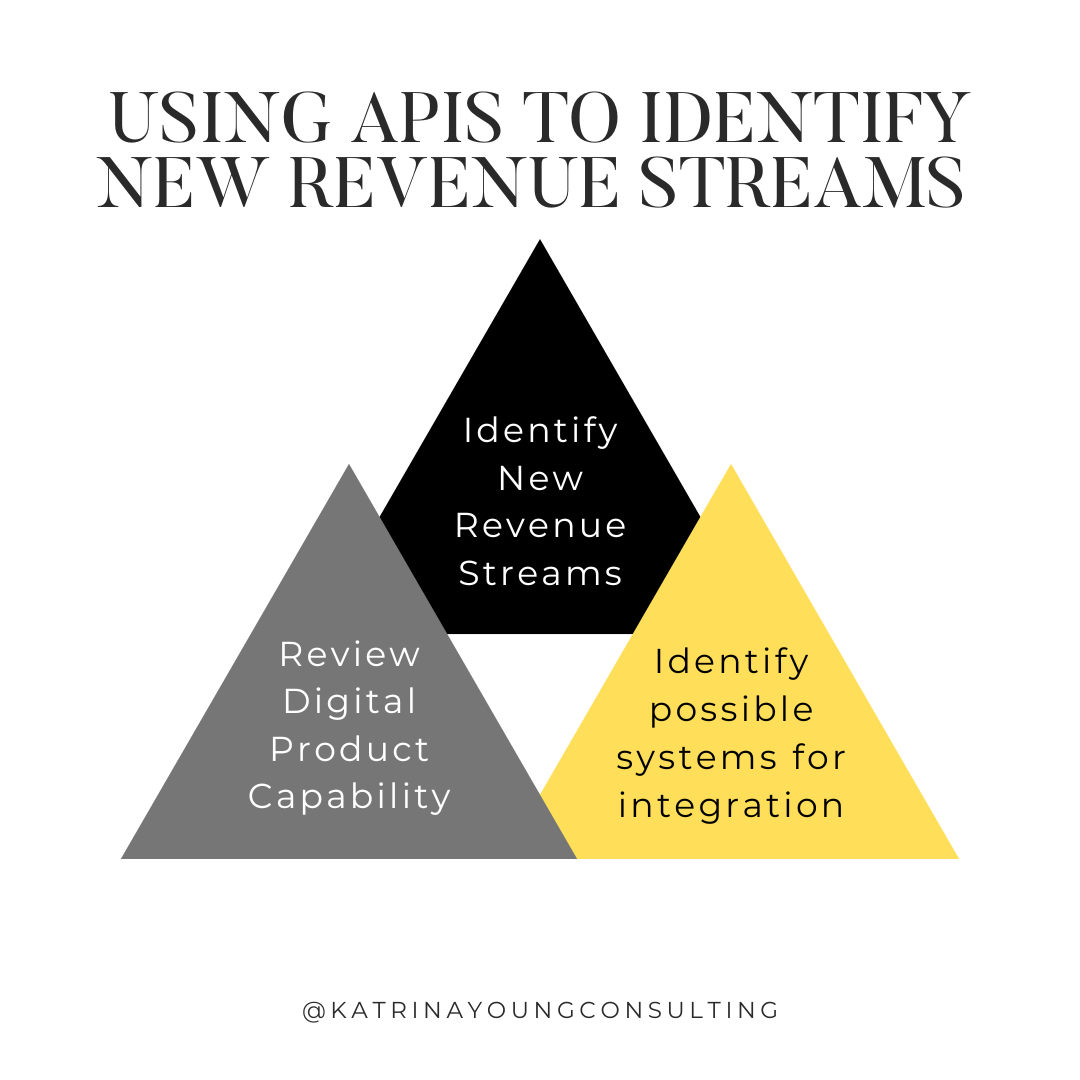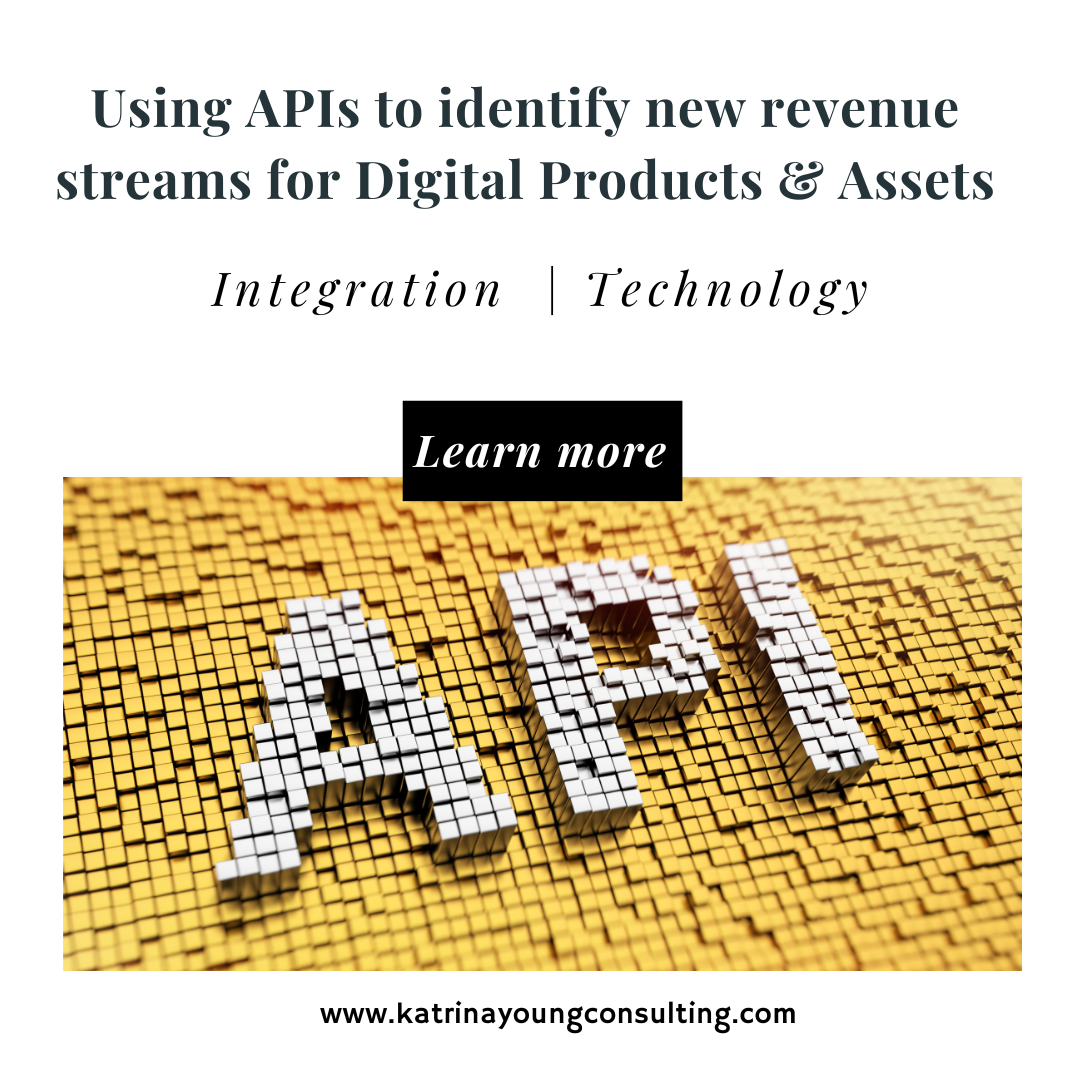Using APIs to identify new revenue streams
for Digital Products and Assets for SMEs and Enterprises
Using APIs to Identify New Revenue Streams for Digital Products and Assets: A Guide for SMEs and Enterprises
As a Multi-award-winning Strategist named as one of the top 40 Digital UK Women to watch in 2020, and a Strategic Business Venture Consultant, Online Innovation and Technology Enabler, Katrina Young has extensive experience in the technology sector and a deep understanding of how businesses can leverage technology to drive growth and success. In this blog, Katrina will explore how APIs can be used to identify new revenue streams for digital products and assets for SMEs and Enterprises.
What are APIs?
API stands for Application Programming Interface, and it is a set of protocols and routines that allow different software applications to communicate with each other and share data. APIs enable different systems to work together and exchange information, making it possible to automate processes, reduce errors, and create a more efficient workflow.
Why are APIs Important for Digital Products and Assets?
APIs are critical for digital products and assets because they allow businesses to integrate different systems and create new revenue streams. For example, by integrating a digital product with an e-commerce platform through an API, a business can create a new revenue stream by selling the product through the e-commerce platform. Similarly, by integrating a digital asset with a marketing automation platform, a business can create a new revenue stream by using the asset to drive leads and sales.
How to Identify New Revenue Streams using APIs To identify new revenue streams using APIs, businesses need to understand the capabilities of their digital products and assets, and assess the potential for integration with other systems. Some steps to follow include:
Assess your digital products and assets: Evaluate your digital products and assets to determine their capabilities and potential for integration with other systems.
Identify potential systems to integrate with: Look for systems that could benefit from integration with your digital products and assets. For example, e-commerce platforms, marketing automation platforms, and customer relationship management (CRM) systems.
Evaluate the potential for integration: Evaluate the potential for integration between your digital products and assets and the systems you have identified. Consider factors such as ease of integration, cost, and potential revenue.
Plan and implement the integration: Once you have evaluated the potential for integration, plan and implement the integration between your digital products and assets and the systems you have identified.
Monitor and adjust: Monitor the performance of the integration and make adjustments as necessary to optimise the revenue stream.
By following these steps, businesses can identify new revenue streams using APIs and leverage their digital products and assets to drive growth and success.
Action Points:
APIs are a set of protocols and routines that allow different software applications to communicate and share data.
APIs are critical for digital products and assets because they allow businesses to integrate different systems and create new revenue streams.
To identify new revenue streams using APIs, businesses need to assess their digital products and assets, identify potential systems to integrate with, evaluate the potential for integration, plan and implement the integration, and monitor and adjust.
Katrina Young is a Multi-award-winning Strategist, Strategic Business Venture Consultant, and Online Innovation/Technology Enabler who can help businesses leverage technology to drive growth and success.
Need support in this area? Contact us for further information
Steps to take;
Assess your digital products and assets to determine their capabilities and potential for integration.
Identify potential systems to integrate with, such as e-commerce platforms, marketing automation platforms, and CRMs.
Evaluate the potential for integration, considering factors such as ease of integration, cost, and potential revenue.
Plan and implement the integration between



